Two 59%+ winners, four above 25% in Aug – How this AI model keeps picking winners
Introduction & Market Context
Hapag-Lloyd AG (ETR:HLAG) presented its H1 2025 results on August 14, 2025, highlighting strong volume growth amid challenging market conditions. The German container shipping giant reported an 11% increase in transport volume, though profitability metrics showed slight declines as the company navigated geopolitical tensions, trade uncertainties, and network transition costs.
The presentation comes against a backdrop of volatile global shipping markets, with continued Red Sea disruptions forcing vessels to reroute around the Cape of Good Hope and uncertainty surrounding new US tariff policies. Despite these challenges, global container volumes increased by 4.5% in H1 2025, driven primarily by strong exports from the Far East.
H1 2025 Financial Performance
Hapag-Lloyd reported solid top-line growth for the first half of 2025, with revenue increasing 11% year-over-year to USD 10.6 billion. However, profitability metrics showed modest pressure, with EBITDA decreasing 2% to USD 1.9 billion and group profit declining 2% to USD 0.8 billion. Free cash flow improved by USD 0.2 billion to USD 0.7 billion.
As shown in the following financial results overview:
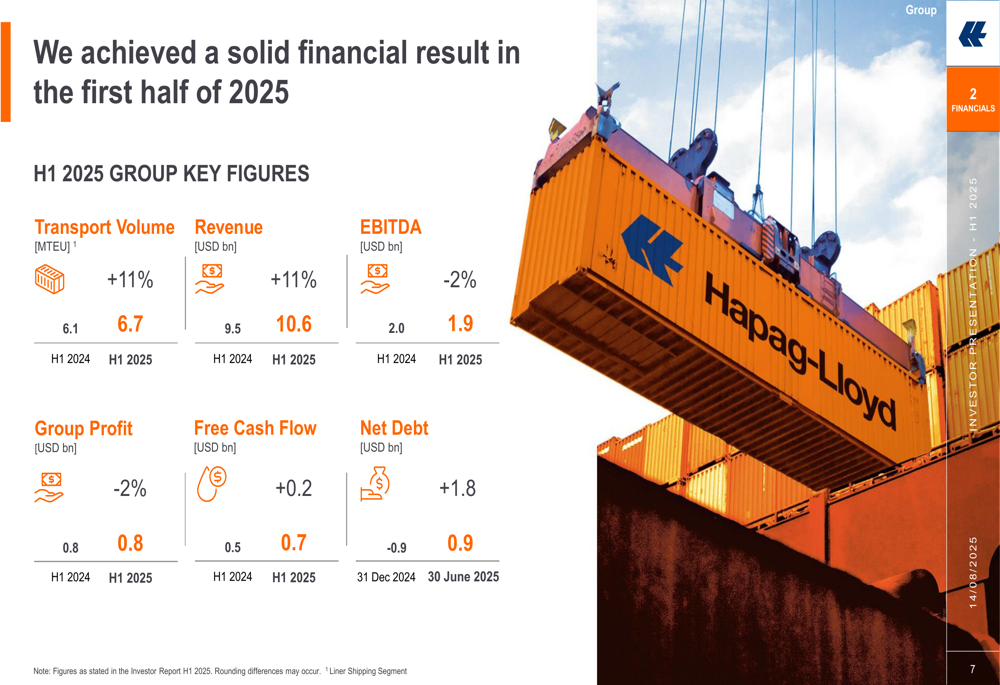
The company’s performance reflects a significant slowdown in Q2 compared to Q1, when Hapag-Lloyd had reported a 45% surge in group profit to USD 469 million. This suggests that while the first quarter started strong, the second quarter faced more substantial headwinds.
A more detailed breakdown of revenue and earnings performance illustrates this trend:
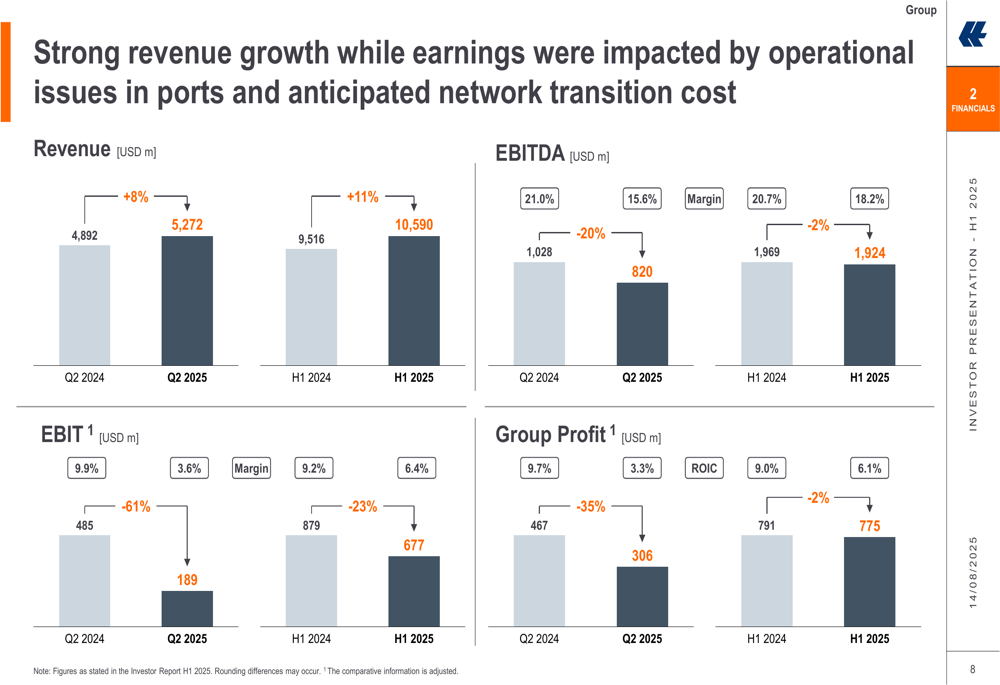
Unit costs were negatively impacted by several factors, including continued Red Sea re-routings, operational disruptions in ports, and costs associated with the Gemini alliance phase-in. The company has launched a comprehensive cost reduction program targeting more than USD 1 billion in savings until 2026 to address these challenges.
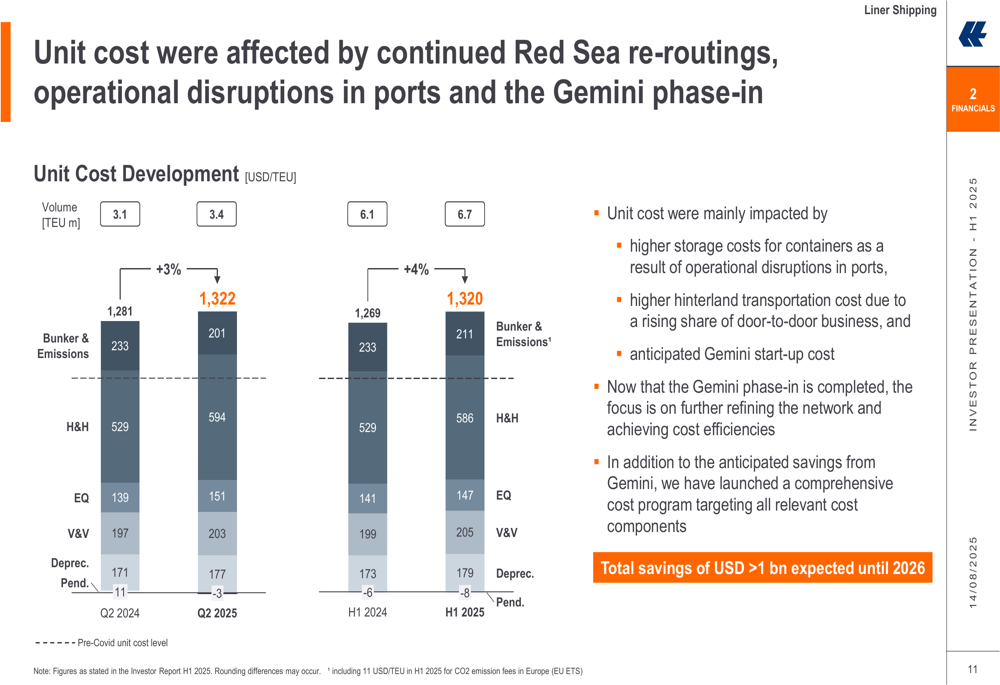
Operational Highlights
A major achievement highlighted in the presentation was the successful transition from THE Alliance to the new Gemini Cooperation, which was concluded in Q2 2025. The new alliance has maintained schedule reliability consistently above 90%, representing a significant improvement in on-time delivery performance.
The following chart illustrates the Gemini alliance’s reliability metrics:
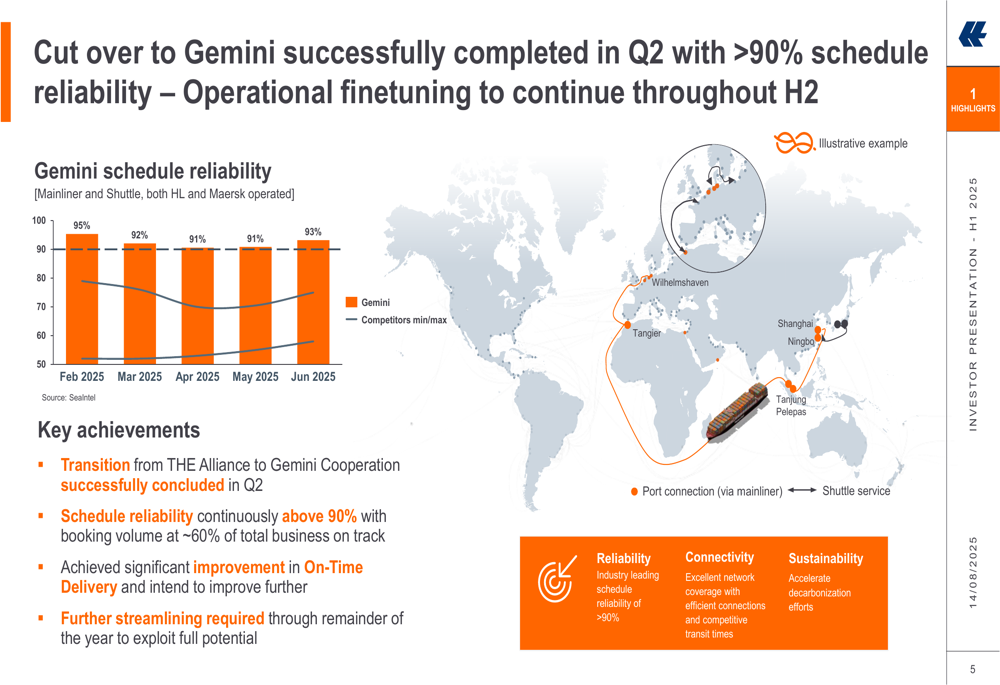
Hapag-Lloyd also made substantial progress in upgrading its vessel fleet, with the final four of twelve 24,000 TEU dual-fuel vessels delivered in H1 2025. The company reported that 38% of its existing fleet has been modernized, with green commercial products gaining traction. The presentation highlighted the company’s commitment to adopting green methanol and meeting the performance targets of its sustainability-linked bond.
The fleet modernization efforts are illustrated in this overview:
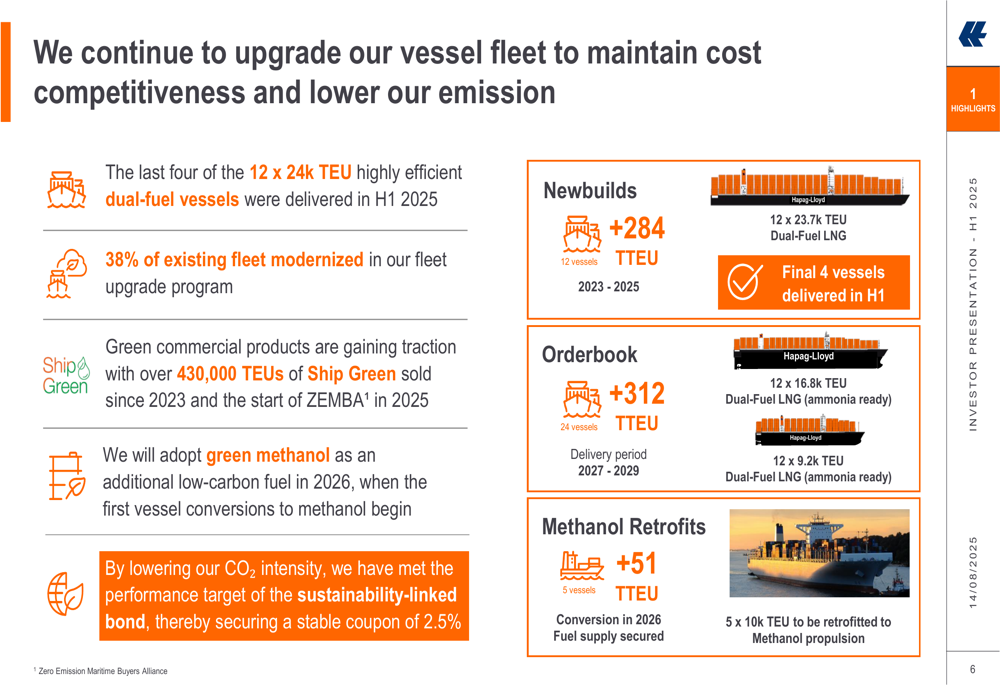
Market Challenges
The presentation addressed several significant market challenges affecting the container shipping industry. Uncertainty surrounding US tariffs has negatively impacted US imports, with new tariffs taking effect in August 2025 expected to constrain short-term volume growth on U.S.-bound routes.
The following slide details the impact of US tariffs on container imports:
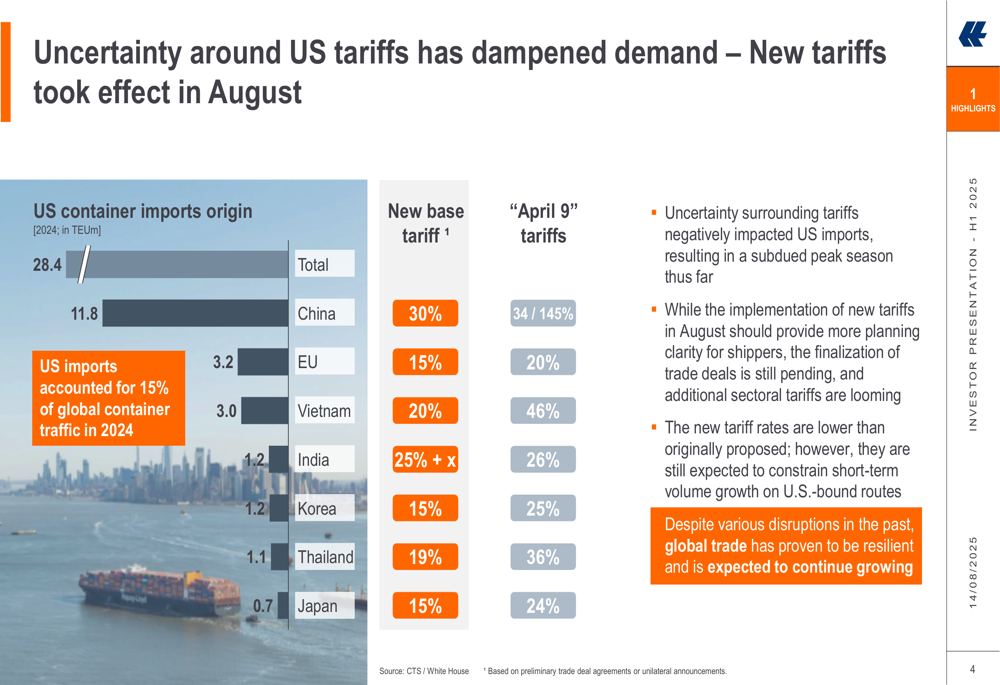
Ongoing security concerns in the Red Sea region continue to force vessels to reroute around the Cape of Good Hope, absorbing capacity and increasing operational costs. Recent attacks make a return to Red Sea routes unlikely in the near term, according to the company.
Looking ahead, Hapag-Lloyd noted that frontloading ahead of tariff implementation and higher permanent tariffs might slow demand in the second half of 2025. The company cited Clarkson’s July forecast, which assumes continued rerouting around the Cape of Good Hope in 2025 and a gradual unwinding in 2026.
Strategic Initiatives
Beyond its core container shipping business, Hapag-Lloyd reported positive developments in its terminal segment. The terminal business showed revenue and profit growth, driven by good operational performance and consolidation effects. Higher storage revenues and growing throughput due to Gemini services contributed to the positive results.
The company announced that on August 1, 2025, Hanseatic Global Terminals established its first regional headquarters in Santiago, Chile, underscoring its commitment to expanding its terminal operations.
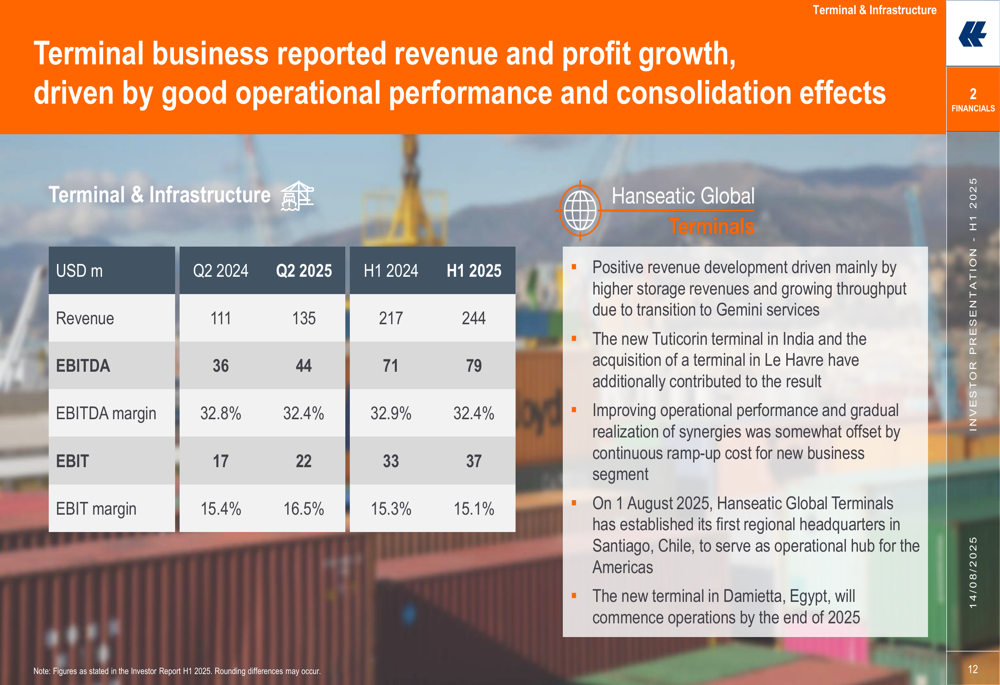
Despite the increase in net debt to USD 0.9 billion, Hapag-Lloyd maintained a strong balance sheet with an equity ratio of 61% as of June 30, 2025. The company’s financial debt profile showed a total of USD 7.366 billion in liabilities, consisting of corporate debt, vessel and container debt, and leases.
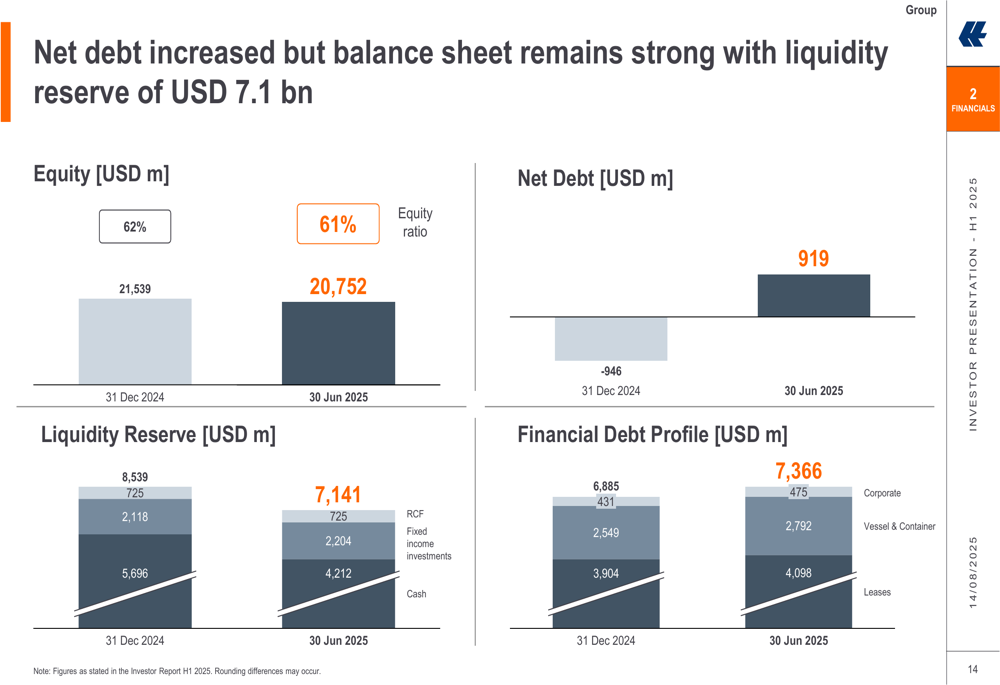
Forward-Looking Statements
For the full year 2025, Hapag-Lloyd narrowed its earnings outlook around the mid-point of its previous guidance, while acknowledging elevated risks due to geopolitical conflicts. The company expects transport volume to increase moderately, while freight rates are projected to decrease moderately. Group EBITDA is forecast to be between USD 2.8 and 3.8 billion, with Group EBIT between USD 0.25 and 1.25 billion.
The following table summarizes the company’s outlook for FY 2025:
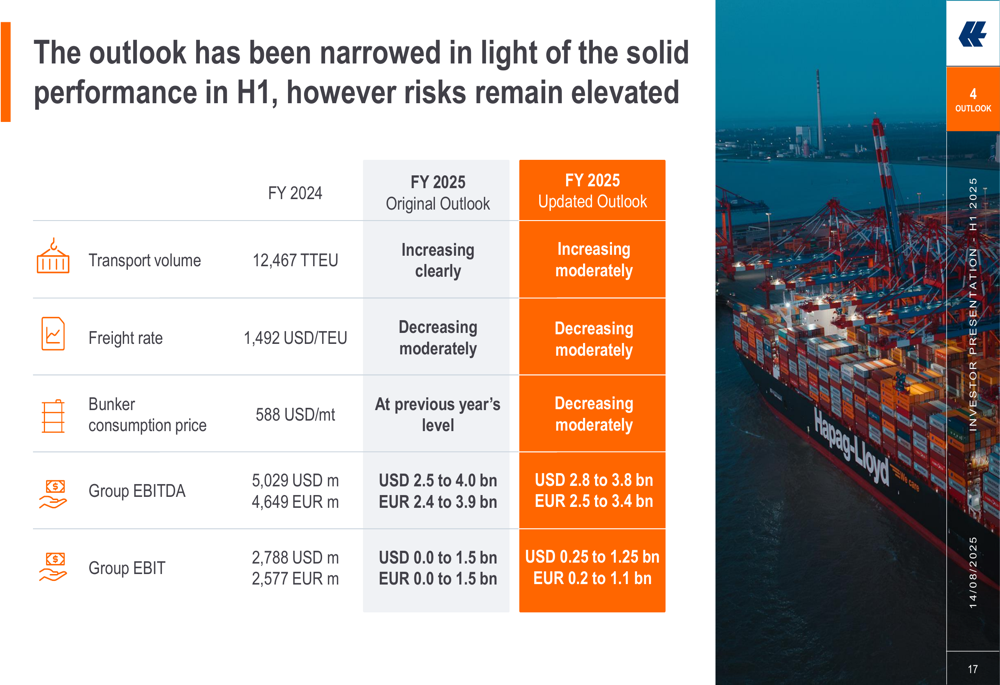
Looking beyond 2025, Hapag-Lloyd outlined several priorities, including further fine-tuning of the Gemini network to secure greater than 90% schedule reliability, maintaining high customer satisfaction, continuing the expansion of its terminal division, and remaining vigilant to adapt to the new market environment.
The stock closed at €133.1 on August 13, 2025, up 1.29% ahead of the results presentation, suggesting cautious optimism from investors. With a 52-week range of €108.3 to €174.6, the company’s shares remain well above their lows despite the challenging operating environment.
Full presentation:
This article was generated with the support of AI and reviewed by an editor. For more information see our T&C.
